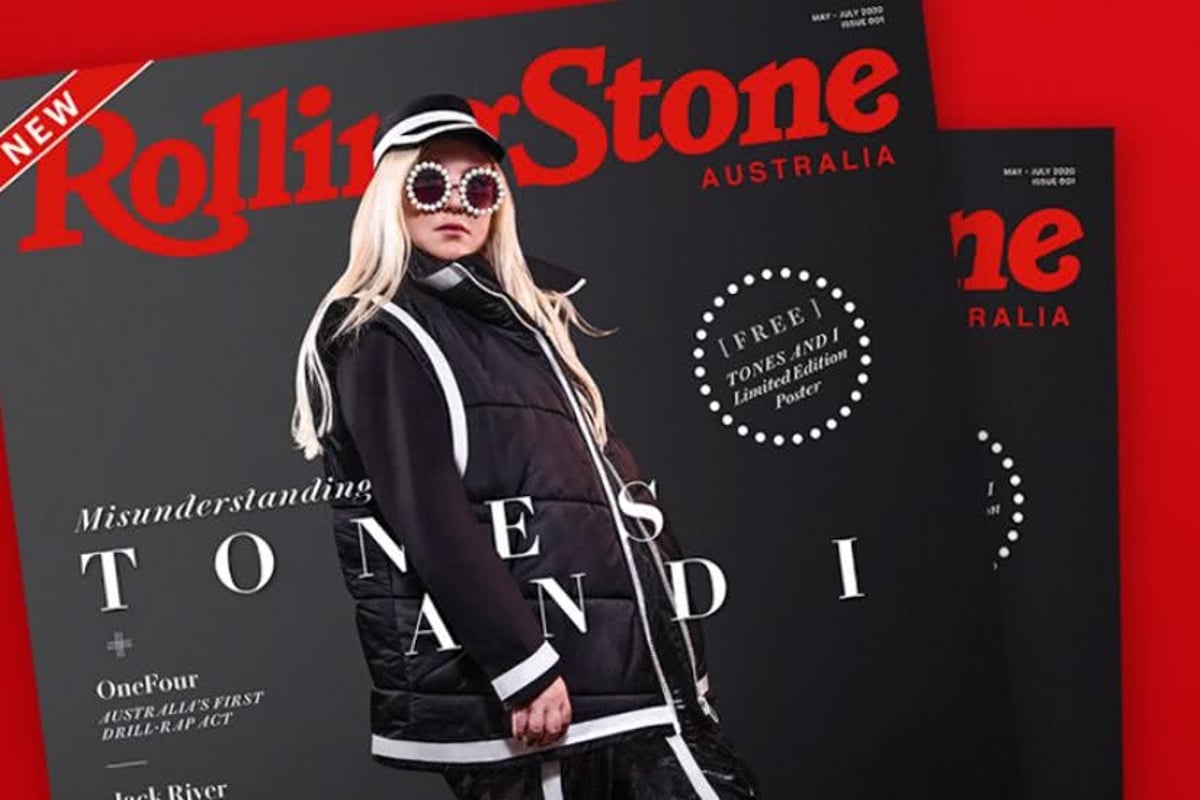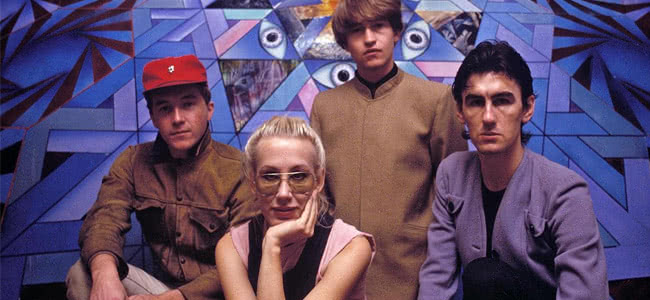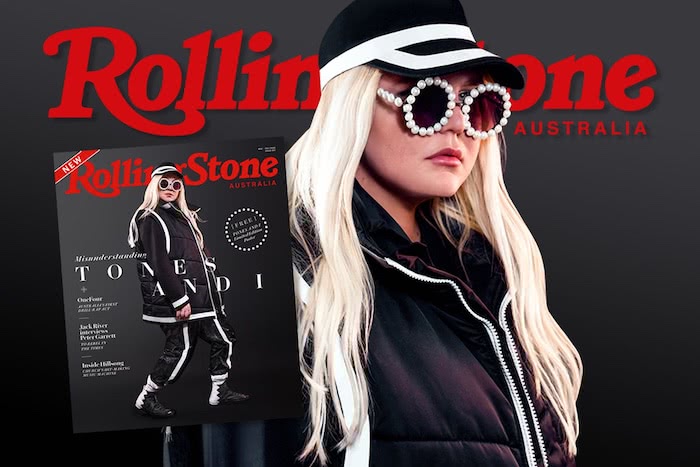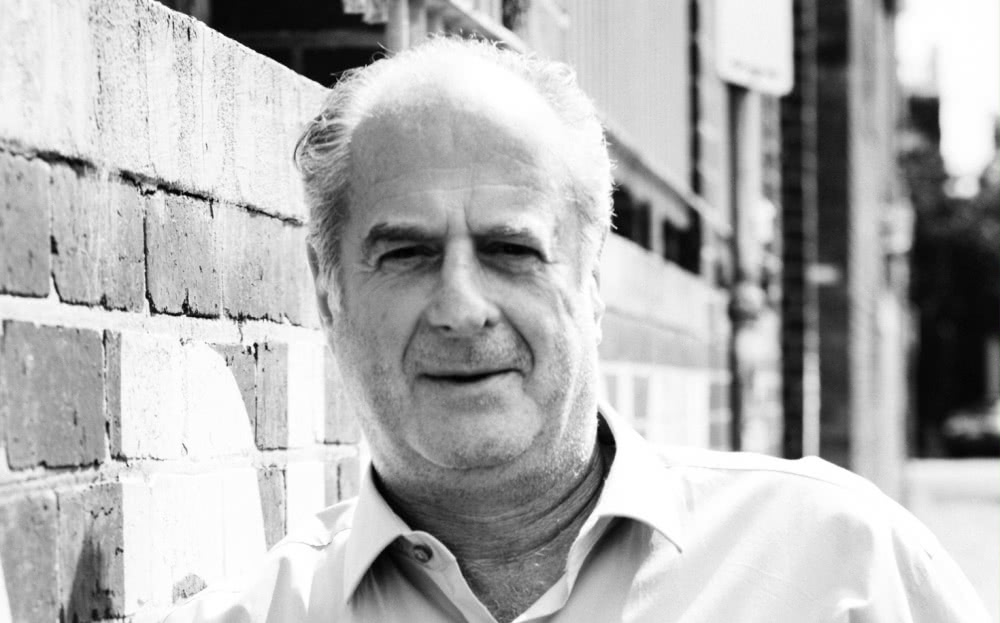Australia’s music biz welcomes the return of Rolling Stone Australia’s magazine

“I’ve been a big supporter of Rolling Stone Australia and I’m very happy it’s coming back.
“Under (the last publisher) Matt Coyte, it was better than the American edition and better than any of the other editions in the world. It’s a magazine like Vanity Fair. it sits on your table, and ten people who come to your house read it.
— Michael Gudinski, head of Mushroom Group
“Rolling Stone has always been about a lot more than merely describing how new music sounds and telling you who’s doing what.
“They’ve always sought to explain the artist and their work. That’s why it made sense that Rolling Stone covered politics and film as well as music – it was all part of tracking and revealing the zeitgeist.
“You could argue that given today’s overwhelming social media din and clutter we need this interpretative function more than ever. We need someone to help filter the signals out of all that noise and Rolling Stone is culturally well positioned to provide it given their history.”
— John Watson, artist manager, previously A&R head and music journalist.

John Watson
“It was a beautiful publication. Well laid out, good photography, big pages […] They always wrote well on Dylan. I remember their coverage of the Rolling Thunder Revue (great photographs too) and when they gave the Record Review section completely over to analysis of Blood On The Tracks. Rightfully so.”
— singer songwriter Robert Forster and Go-Betweens member.

The Go-Betweens
May 2020 marks the latest era of Rolling Stone magazine’s operations in Australia.
Sydney-based The Brag Media – publisher of The Industry Observer and Tone Deaf, among others – carries the masthead in this country, with 75% of content being local.
It struck a licensing deal with Stone’s parent company Penske Media Corporation (PMC) last November, becoming its 10th current international operation.
Luke Girgis, CEO of The Brag Media, admits that negotiations were long.
“We wanted to make sure PMC were going to fully invest in the Australian market and PMC wanted to be certain we would be the best representation for the brand.
“It was long but it needed to be.”
Of the decision not to take the easy route of a blog or podcast, managing editor Poppy Reid explains, “We strongly feel that there is a place for long-form print journalism and now more than ever its experiential element is important.
“Now is the time to engage in art that feeds the soul.
“While music has been proven to have positive effects on mental health, the celebration and discussion of art and culture through a tangible format offers a certain prestige that online could never achieve.”

The Right Tone
For the front cover piece on Tones And I, Reid spent time in her newly-acquired house in bayside Melbourne, interviewed four friends, and the teams at Sony Music and management company Lemon Tree Music, and hung out backstage for a day at Laneway Sydney.
“Everything is wrong online,” is one comment Tones And I makes in the piece.
Reid adds, “Without giving too much away for our subscribers, we believe Tones And I represents a new never-before-seen music industry blueprint of an alternate pathway to success.
“Never before have we seen an export story like hers, and we’re not entirely sure it will ever be eclipsed.
Watch Tones and I perform ‘Dance Monkey’ live at Splendour in the Grass
“But our cover story isn’t really about her ascent, anyone with access to the internet has a fair idea of how global she is. It’s more about Toni Watson, the woman, the artist, and the casualty of Australia’s tall poppy syndrome.”
Features in the first two editions include New York-based Kiwi writer Jessy Edwards on Hillsong Church’s international chart success, Lars Brandle on COVID-19’s impact on the music biz, the painful truth about Australia’s strip-search laws, the scariest serial killers in Australian history and how China’s punk musicians are weathering the COVID-19 storm.
Writers in the first issues include Tyler Jenke who this week had a win in the Media category of The Music Network’s 30 Under 30 list, Hugh Bohane who reported from Asia for global highbrow magazines as the USA’s The Atlantic and UK’s The Internationalist, and political and social justice correspondent Ben Hagemann.
Photographers include Ken Leanfore, GG McG, David Herington and Ashley Mar.
Reid explains: “Rolling Stone Australia is interested in telling the full story.
“While the iconic brand will always illuminate the culture of the times, we’re very much focused on telling Australian stories without an agenda.
“We believe our readers are intelligent and appreciate being given the opportunity to make up their own minds on an issue, whether it be political or cultural.
“We’re offering our readers investigative reporting, providing commentary from multiple angles, some of which we believe have been overlooked in the past.
“The feedback from consumers so far has been nothing short of astonishing. We’re extremely encouraged by the support, and we’re doing all we can to make sure our readers are heard as we lock in subscriptions.
“For past subscribers to the last incarnation of the magazine, this means we are offering the first issue free for their annual subscription.”
This time around, sports plays an integral role in the editorial mix.
Girgis: “Sport is extremely important to Australian culture so we plan to tell that story. We are less interested in the week to week results or form guides, and more interested in the stories behind the athletes and codes. “
Gudinski (who’s reportedly eying an expansion into sports management): “Sports is an interesting aspect for Stone, but they’d have to have a different angle to it, though, to make it work.
“These days you can’t create from the past.
“The audience that Rolling Stone can appeal to follows a lot of politics internationally. In their music coverage, live should be as big a component as recorded music.”

Mushroom Group’s Michael Gudinski
Counter Culture
In the late ‘60s, Australia’s youth was revolting against decades of conservative rule with protest marches against the Vietnam war and ties with apartheid South Africa; campaigns for female, First Nations and gay equality; and new attitudes to legalisation of drugs and protection of mother earth.
Not surprising, then, that two years after Rolling Stone was founded in San Francisco by Jann Wenner during that famous 1967 “summer of love”, it had found its way here.
Initially stories were occasionally reproduced in the pages of two Phillip Frazer publications, the music weekly Go Set and the up-against-the-wall-motherfuckers Revolution.
In 1972, Frazer launched Rolling Stone Australia as a stand-alone, mostly a reprint of the US magazine, with a page of local content and ads.
In the mid-70s when Frazer moved to New York, the rights went to a consortium made up of finance writer Paul Gardiner, ad man Paul Comrie-Thompson and journalist Jane Matheson.
Michael Gudinski, part and parcel of the counter culture through Mushroom Records and psychedelic live events, was one of those who invested in Rolling Stone Australia.
It was a common occurrence: the British version had The Rolling Stones and The Who among its funders.
Rolling Stone Australia drew the best journalists and photographers to cover the growing sophistication of the scene, and started to put major Australian acts on the cover.
The magazine underwent a series of publishers and editors through the years, but it remained a cooler version than its American parent.
Wenner maintained its original readership with a focus on baby boomer acts.
But the Aussie version covered trends as new wave and electro-funk, giving it younger eyeballs.
Circulation ranged from between 35,000 to 40,000 a month although towards the latter days it slipped under the 20,000 mark.
When Gardiner, Thompson and Mathieson pulled up stakes in 1987 as debts grew, editor Toby Creswell took over ownership with former school friend Philip Keir, and Keir’s wife Lesa-Belle Furhagen.
Tensions between the three led to a dramatic split in September 1992, with Creswell escorted out of the building.
He and Furhagen set up Juice, aimed at the younger Big Day Out crowd.
Rolling Stone continued under Kathy Bail (who had sat in the editor’s chair at the Australian Financial Review Magazine, The Bulletin and HQ Magazine) and former Juke linchpin Dino Scatena.
Keir’s company Next Media was sold in 2008 to Worseley Media, which went to ACP Magazines and then to Bauer Media Group in 2012.
Matthew Coyte, its editor since 2008, set up the company Paper Riot to take over ownership, and expanded the brand with its own awards.
In January 2018, Paper Riot were into liquidation with debts totalling a reported $500,000.
Message In A Bottle
In early 1980s Townsville in Far North Queensland, John Watson was a schoolboy devouring music and magazines, including Juke and RAM as well as Stone’s counter culture icons as Hunter S. Thompson, PJ O’Rourke and Tom Wolfe.
Watson recalls, “Musically it was like being stuck on a deserted island so the music press was like a message in a bottle for me.
“In the absence of the internet, cable TV or national radio networks it was the one place where I could find out what was happening in ’the real world’.
“Rolling Stone Australia was always one of the key publications, and the other local music papers like RAM and Juke were staffed largely by writers who’d been inspired by the Rolling Stone doyens in the U.S. so it cast a large shadow.
“It’s hard for any of us to remember how much less accessible music used to be back then – particularly if it wasn’t in the top 40 – so the music press was essential.”
Watson never imaged he’d one day actually be inside Stone pages himself.
The indie band he moved to Sydney with got a half page write-up from editor Toby Creswell, and he ended up doing features and reviews between 1988 and 1991.
He quips, “Typically I got the smaller stuff that John (O’Donnell) and Toby (Creswell) didn’t want to do themselves and that senior writers like Ed St John didn’t want either.
“My favourite large feature was a Skyhooks piece – I’d been a huge fan as a little kid and this was around one of their reformation tours.
Watch the music video for ‘Horror Movie’ by Skyhooks:
“I also convinced them to let me do a political feature about green preferences in the lead-up to the 1990 federal election and that was important it gave me an excuse to gather some extra material for my uni thesis (like interviewing Graham Richardson who was Environment Minister at the time and very chuffed to be in Rolling Stone).
“What was both funny and a bit awkward was that I went from freelancing for Stone to doing A&R for Sony so I found myself working with some artists who I’d recently written about.
“That could have been a bit awkward but thankfully there was nobody I’d panned!”
Watson’s biggest earlier signing, Silverchair, scored their first Stone front cover via US writer David Fricke who hopped aboard their tour bus for several days in late 1995 or early 1996, just as America was starting to break for them.

Australian music icons Silverchair
The piece was intended to be a front cover for the US edition, but was pipped at the post by John Travolta who was having his Pulp Fiction resurrection.
The piece by Fricke, a long time supporter of Australian music, and photos by Mark Seliger “really captured the moment,” Watson says.
“It was done in the depths of winter and the heater on the bus broke down in the early hours of the morning leaving it literally at 2 degrees.
“The driver stopped at a Wal Mart and bought a heater with an open flame and we were all huddled around it trying to avoid hypothermia as we barrelled down the highway.
“The flame was rolling here and there, near our blankets as the bus pitched and tossed and I’m pretty sure David thought we were all going to get incinerated.”
Another of Watson’s star management clients, Missy Higgins, shared a cover feature in 2005 with John Butler.
Watch Missy Higgins perform live in the Sydney Opera House forecourt:
They’d toured together a year before, which helped her break through, and both were expected to strike hot at the ARIA awards.
“As they were brand new faces I think the editors probably felt that together they’d have enough star appeal to drive sales.
“In the piece there was a conversation about bisexuality which raised a few eyebrows at the time.
“I still have that cover framed in my office –John’s riding a bike and Missy’s kinda piggybacking him. It’s a great shot that really captured the excitement of that breakthrough moment for both of them.”
Out In Your Streets
Robert Forster is another who’s watching to see what Rolling Stone Australia will bring.
He enthuses, “I think it’s great. They should return to the mid seventies format. Not glassy, but colour photography on big pages with long stories and in-depth love of the music.”
Growing up in Brisbane, Rolling Stone Australia was opening up his world as well, from the mid- to late ‘70s, when he was learning how to play guitar and writing poetry.
In 1977 he and Grant McLennan formed The Go-Betweens. A decade later they had their biggest hit ‘Streets Of Your Town’ and were living in London.
Watch The Go-Betweens’ ‘Streets of your Town’
The Go-Betweens were pretty much a Stone band, and were dutifully covered in features and reviews.
However Forster recalls, “The thing was that the band and my solo career never had a breakout success moment.
“So coverage was done by good journalist who wanted to write about the band or myself knowing the space they would get would not be extensive.
“All coverage appreciated though.”
In recent years in between solo albums, Forster has been also been penning pieces for upmarket publications – and says there’s a place for Stone’s kind of writing.
“There is a yawning gap to be filled. Innovative technology meets content.
“Not a magazine where the graphic design is king, but one where the journalist is the focus, writing thousands of words and getting behind the scenes, close to the artists or band, as they used to.”
This article originally appeared on The Industry Observer, which is now part of The Music Network.






























